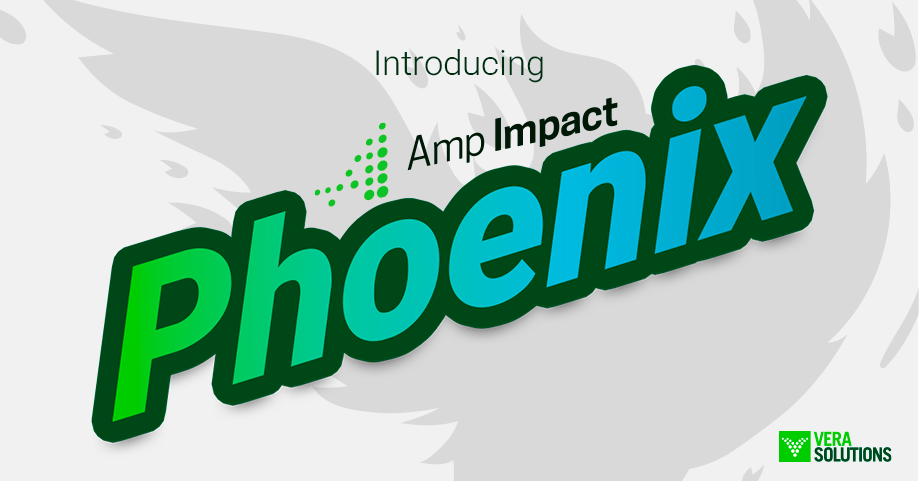At Vera Solutions, we’re often asked, “Why do you build nonprofit solutions on Salesforce? Isn’t it just a CRM tool?” As a technology provider, we love Salesforce mostly for its extensive configurability and scalability—allowing us to build using ‘clicks, not code’, streamline and automate organizational workflow, and store all kinds of data on the cloud. But as a mission-driven organization, we look holistically at a variety of important criteria to consider in choosing a technology platform—from user-friendliness to security to costs. Here are the top 7 reasons why we trust Salesforce as our technology backbone – and why you should too.
When we founded Vera Solutions in 2010, we didn’t set out to become a Salesforce implementation partner. We were inspired to create a company delivering affordable, user-friendly technology solutions that would unlock a culture of transparency, collaboration, and data-informed decision-making across the social sector. However, having implemented one of the first Salesforce-based monitoring and evaluation (M&E) systems for a health education nonprofit in South Africa, we realized early on the power of Salesforce to transform the way organizations manage, analyze, and use programmatic data.
After more than a decade building nearly every type of nonprofit data solution imaginable—from online fundraising systems to mobile case management systems to sophisticated monitoring and evaluation (M&E) systems to even a few latrine waste management systems, we’re convinced that Salesforce is the best all-around platform to meet most nonprofits’ digital transformation needs. Today, Salesforce is trusted by more than 50,000 nonprofits and has steadily become not only the world’s leading CRM platform but also a leading platform for M&E, program management, and grant management solutions. Let’s break down the top 7 reasons why organizations of all shapes and sizes have ditched their spreadsheets, their data silos, and their clunky CRMs and moved to integrated solutions on Salesforce.

Amp Impact by Vera Solutions enables organizations to better understand their impact and drive more efficient, cost-effective programs on Salesforce.
1. Salesforce is designed for flexibility
In one of the latest Salesforce.org Nonprofit Trends report, nearly three quarters (74%) of nonprofit leaders report digital transformation is a “need-to-have” or “must-have,” but only 12% scored high in terms of digital maturity. And, 60% reported their donors expect a better experience than their current technology provides. We’ve already noted that Salesforce is remarkably customizable, accommodating a wide range of use cases and requiring minimal coding knowledge or expertise. But flexibility goes beyond initial system configuration. Organizations need to understand not only how a technology will meet their needs today, but also how it will grow alongside them and adapt to future needs. Flexibility is a big reason why more than 150,000 companies rely on Salesforce – it’s not just great for tracking their sales pipelines, but they can easily connect their CRM to other kinds of relevant data and build out custom apps for an infinite number of use cases.
As your organization evolves over time, you will undoubtedly need to capture new data points, modify picklist values, inactivate certain fields, change layouts, activate new features, and introduce new data tables. Salesforce makes these commonplace changes possible without having to rely on outside developers. Administrators can quickly learn how to adjust the data model, build process flows using declarative automation tools, and set up analytics using drag-and-drop reports and dashboards.
Bottom line: Salesforce is a highly flexible platform designed to scale alongside your organization. It not only offers great CRM and fundraising functionality through the Nonprofit Cloud but can easily extend to meet a wide range of organizational needs across HR, marketing, community engagement, impact measurement, program management, and more.
Learn how your nonprofit can get the most out of Salesforce’s Reports and Dashboards.
2. Salesforce is user-friendly for everyone
In addition to flexibility, user experience plays a key role in sustained system adoption. Salesforce provides user-friendly tools and features across each part of the data cycle—from data entry (e.g. Screen Flows and Dynamic Forms) to data management (e.g. List Views and Duplicate Management) to data analysis and visualization (e.g. Reports and Dashboards). Moverover, the Salesforce Mobile app offers an intuitive mobile experience without needing any additional development. All this enables your entire organization, including users with limited tech literacy, to actively engage with the system and use data to inform their day-to-day work, strategy, and decision-making. You can also extend native functionality to external partners, grantees, donors, and other stakeholders using the Salesforce Experience Cloud. And while Salesforce is friendly for end-users, it’s perhaps even more friendly for administrators, enabling them to manage, monitor, and adapt system functionality with a robust range of declarative, drag-and-drop tools.
Watch this webinar with RefugePoint and World Bicycle Relief to learn key lessons for successfully designing technology for end users.
3. Salesforce has boundless interoperability
We were initially inspired to start Vera Solutions primarily to help organizations break down data silos that hinder transparency and accountability. Interoperability, or the ability for systems and tools to speak to one another, is critical to achieve truly integrated systems and processes – and one of the areas where Salesforce shines the brightest. Salesforce provides an extensively documented set of APIs, tools like Lightning Connect and Mulesoft that allow connecting to external databases with a few clicks, and a wide range of plug-and-play integrations via the Salesforce AppExchange – the number one enterprise app marketplace.
Whether connecting to mobile data collection tools like TaroWorks or Formyoula, to online webform tools like FormTitan or FormAssembly, or to data analytics and visualization tools like Tableau or PowerBI, the Salesforce platform’s interoperability is truly boundless. Further, middleware tools such as OpenFn, Jitterbit, Dell Boomi, and Zapier can facilitate connecting your Salesforce systems to other tools and platforms, like CommCare, Kobo Toolbox, DHIS 2, and Microsoft Dynamics 365, unifying sources of information to enable your organization to act faster and smarter.
Watch OpenFn’s webinar, Getting started with Data Integration, to learn how middleware tools enable technologies to speak the same language.
4. Salesforce guarantees security you can trust
In recent years, data privacy and security have become a top concern for organizations, especially for those working with highly sensitive data in the fields of global health and humanitarian aid. Salesforce comes with powerful out-of-the-box security features—including multi-factor authentication, encryption, event monitoring, Health Check, and field auditing—enabling your staff to do their jobs safely while knowing your organization’s data is secure. You can also implement internal security controls to manage users’ access and permissions in Salesforce, ensuring the right staff are able to see and do the right things. For external security, you can further safeguard your data in the cloud with single-sign-on, configurable password policies, and Salesforce Shield.
For more information, check out the Salesforce security homepage for real-time information on system performance, alerts for current and recent phishing and malware attempts, and tips on security best practices for your organization.
5. Salesforce is constantly innovating and improving
When it comes to weighing all these factors, don’t just consider what a tool or technology offers today – extrapolate from its innovation track-record to anticipate what it will offer in the future. Salesforce is a leader in PaaS innovation, with an estimated expenditure of $4.9 billion on research and development (R&D) in the fiscal year 2024. This ensures their products and features are constantly innovating and improving to meet the ever changing needs of customers, partners, users, and admins. Salesforce.org, the social sector branch of Salesforce.com, specifically focuses on innovation catered to social sector organizations. Salesforce and Salesforce.org collect feedback from customers and partners via the Salesforce IdeaExchange, a community-driven innovation hub where customers and partners can post ideas and vote on new product features they want to see in future. Salesforce then leverages this feedback to launch three releases per year.
6. It has a robust and growing ecosystem
While implementing a new system can be daunting, having a strong support system is crucial yet often overlooked. Salesforce is known for its extensive ecosystem dedicated to customer success. With a huge and well-connected online community providing help and training, hundreds of partners globally, more than 2 million customers worldwide, and thousands of hours of free, gamified online learning modules on Trailhead, you are never alone in your digital transformation journey. The nonprofit Salesforce ecosystem is alive and well, with thousands connecting on the Power of Us Hub, participating in Nonprofit Community Sprints, and making the most of dedicated nonprofit Trailhead modules.

Check out Salesforce’s new Trailhead modules for impact management.
7. Salesforce offers great value-for-money
When it comes to investing in a technology platform, you’ll want to consider the total cost of ownership (TCO) over time, including setup costs, license costs, and maintenance costs. Setup costs not only include consulting services required to tailor and train, but also internal staff time required to help design, test, and adopt the tool. When it comes to Salesforce licenses, most nonprofits are eligible for ten free Enterprise licenses through the Power of Us program. Beyond that, Salesforce and most of its AppExchange partners offer attractive nonprofit discounts on corporate license costs. Maintenance costs are often underestimated for technology projects, but fortunately Salesforce’s flexibility, friendly back-end, and ecosystem help to maximize the amount of maintenance that nonprofit organizations can do themselves.
While the TCO for any new system may seem expensive, you need to think of it as an investment that will yield return over time. In that context, we’ve found that the value-for-money offered by Salesforce is usually hard to beat—saving organizations invaluable time and headaches when it comes to managing and using data to drive better operations.
In a recent survey, 64% of our clients reported that their Salesforce system saved their staff time, 67% say it saved them headaches, and 71% say it enabled better-informed decisions.
When considering flexibility, user-friendliness, interoperability, innovation, security, ecosystem, and value-for-money, we consistently find that Salesforce offers the best all-around platform for the widest range of nonprofit digital transformation needs. We’re inspired by the progress toward a more data-driven social sector over the last decade, but we also realize much work remains to close the technology gap and help more organizations realize the potential of the Cloud to augment program delivery, strengthen accountability, and achieve more impact in the world. We remain committed to working together with our nonprofit partners, with Salesforce.org, with the wider Salesforce ecosystem, and with other technology partners to effect that change.
Want to explore how Salesforce could help your organization work cross-functionally, automate processes, and incorporate learnings in near real-time?
Speak to one of our experts!






